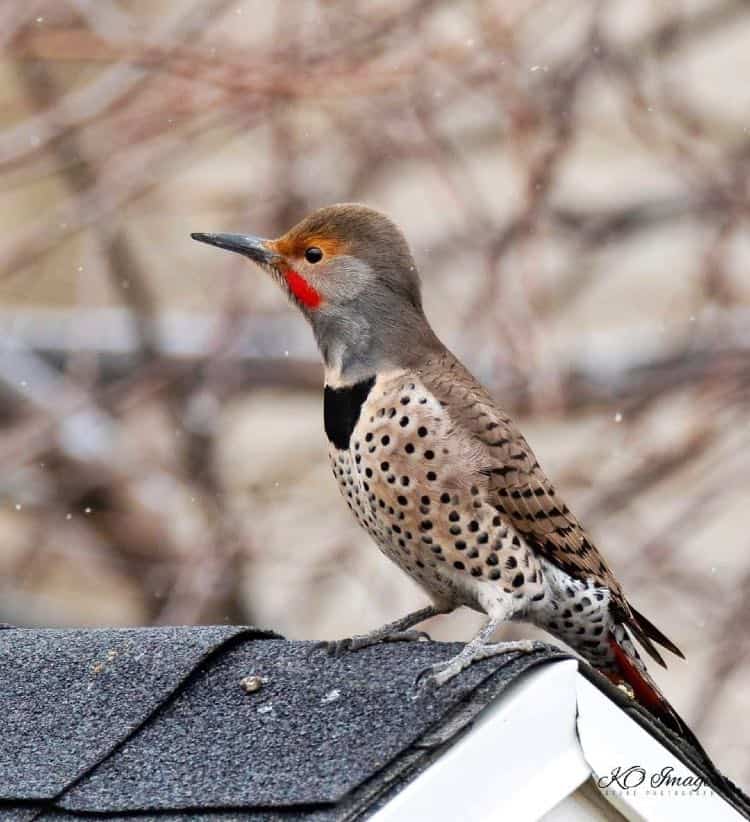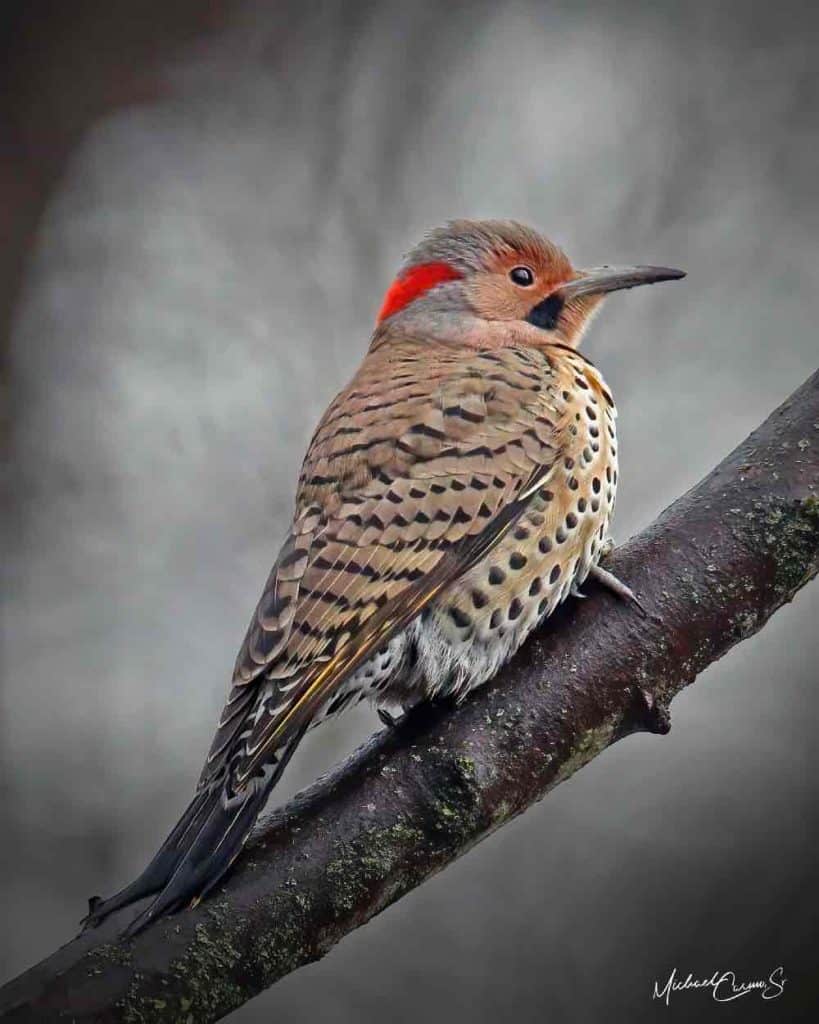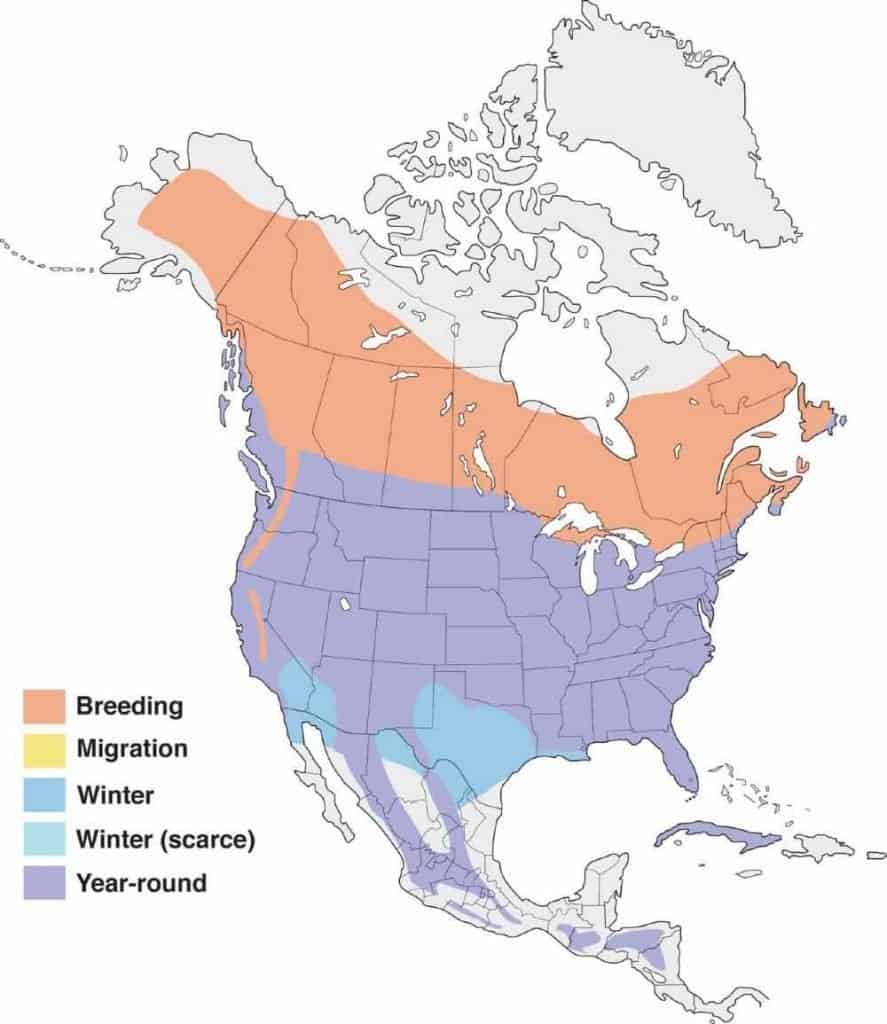

Appearance: A large bird about 12.5″ long. They have brown backs with black bars, a black crescent on the upper chest, and white with black spots on the belly and underparts.
• In the eastern part of their range, they are referred to as “yellow-shafted northern flickers” and have bright yellow underwings and undertail. They have a gray crown, tan face, and a red patch on the nape. The male has a black swipe on his cheek, the female does not.
• In the western part of their range, they are referred to as “red-shafted northern flickers” and have pink underwings and undertail, brown crown, gray face, and crown & nape are brown. The male has a red swipe on his cheek, the female does not
Diet: Insects, especially ants.
Feeder food: Hulled peanuts and suet.
Habitat: Open areas near trees.
Nesting: They are cavity nesters and have 1 brood/year. 5-8 white unmarked eggs per brood. Incubation is 11-14 days.
Migration: Northern flickers are migrators. Scientists believe the timing and duration of their migration from the breeding range to their winter range are dependent on weather. They generally migrate at night and travel in large but loose flocks of up to 100 or so birds.
Year-round range: Each US state as well as parts of British Columbia,
Breeding range: Alaska, Canada, and inland parts of their year-round range in Washington, Oregon, and California.
Winter range: Many will winter in the year-round range while others head further south into southeast California, southwest Arizona, Texas, and Mexico.
Range Map


